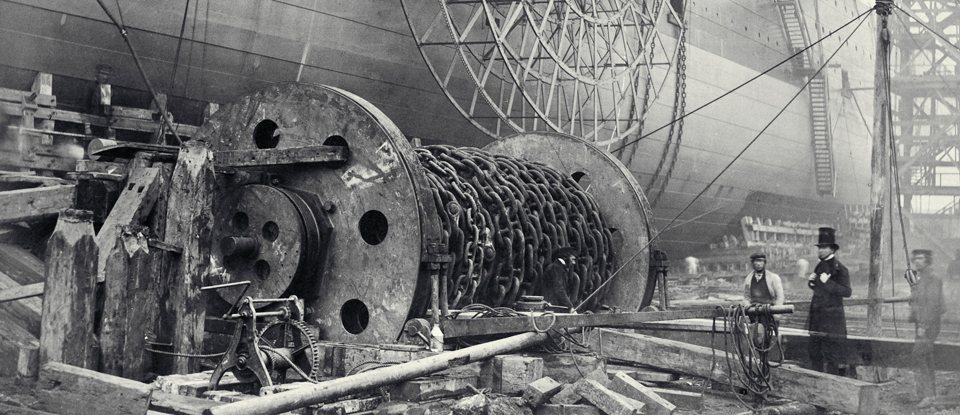.
.
.
There are three stages to development over X number of years:
1. Agrarian economy, where most of the GDP economy 70-50% is engaged in agriculture and agricultural primary products are the main source of income for the country (primary sector such as mining dominates the economic landscape)
2. Industrial economy, where industry/manufacturing dominates the economy at anything between 40-50 % of the GDP.
3. Post industrial tertiary economy....service sector 70-80%.
United Kingdom 1750-1850 Land acquisition laws and experience
USA 1830'S Onwards Land acquisition laws and experience imminent domain
Germany 1850 onwards Land acquisition laws and experience imminent domain
Russia 1890 Witte........5 year plans 1928 Land acquisition laws and experience imminent domain
China 1950 onwards Land acquisition laws and experience imminent domain
The weakness of Indian land law COMPARED TO above great nations experience.
FACT/REALITY:
1. India can't shift from stage 1 to stage 3, bypassing stage 2.......simply can't happen. Singapore, Dubai and Qatar exceptions to this rule.
2. India will have to be a fully fledged industrial society. At present it is in between stage 1 and 2. It needs to fully shift to stage 2.
3. INDUSTRY and INFRASTRUCTURE development was always opposed in the above 5 great nations........by locals and their LAND, but the central government through legal instruments must implement such projects since they benefit the WHOLE country, using eminent domain.
________________________________________________
Land issue: How Modi can go on the offensive
.
Times of India Blog and SA Aiyar
The government believes it has found a
roundabout solution to the land acquisition imbroglio. One investment
bank estimates that acquisition problems affect over 40% of major
stalled projects, though they are not always the binding constraint. The
2013 Act on acquisition provided for the consent of 70-80% of affected
persons plus a social impact assessment. Niti Aayog fears this could
take years to complete.
.

The government proposed a new bill diluting these provisions, but faced stiff resistance from opposition parties, NDA allies and even factions within the BJP. Accusations that Modi was anti-farmer and pro-business tarnished his image, and may cost him the coming Bihar election. So, the government has turned tail and allowed its bill to lapse, instead of re-issuing it through an ordinance, as it did twice before. The 2013 law once again prevails.
.

Why this retreat? First, the government estimates the acquisition problem is smaller than earlier believed. Second, a detailed look at the 2013 Act has revealed loopholes that may make a new law unnecessary. That Act was supposed to make consent mandatory, but omitted the word “consent” from the clause on acquisition for a long list of government projects including industrial corridors, special manufacturing zones and other zones specified in the National Manufacturing Policy. Such land could later be leased to private companies. For all such zones, it can now be argued that no consent is required, removing one cause of delay.
.
The 2013 Act also requires state governments to issue rules for social impact assessments (SIAs). While industrialists fear this could take years, states can specify a short timeline of just 3-6 months. If this is made co-terminus with environment assessment, also required for such projects, then SIAs may not entail any additional delay at all. And so, the government believes, delays can be avoided in most cases without a new law.
.
This seems too optimistic. NGOs will legally challenge this interpretation of the consent clause, and also ask the courts to overturn 3-6 month SIAs, arguing that no meaningful assessments are possible so quickly. The coming court battles could mean long delays and uncertainty. They will be used by NGOs and opposition parties to paint Modi as anti-farmer and pro-business. What’s legally permissible may be politically damaging.
.
A better, proactive approach would be to showcase land policy as the road to prosperity, not expropriation. Modi should have a three-pronged strategy.
(i) The first priority should be “land pooling”, initiated by Chandrababu Naidu in Andhra Pradesh.
(ii) The second priority should be land leasing, as provided for in section 104 of the 2013 Act.
(iii) Forced acquisition should be the third and last priority.
.
Naidu has persuaded thousands of farmers to voluntarily “pool” their land to help build a new state capital. Once built, farmers will get 1,000 sq yds of residential property and 200-450 sq yds of commercial property for each acre pooled. This developed land is expected to be worth Rs 8-9 crore per acre, against the current price of Rs 1-2 crore. In addition, all farmers will get an annuity of Rs 30,000-50,0000, payable monthly, for 10 years till the city is completed. Landless labourers will get a pension of Rs 2,500 per month.
.
Modi should take thousands of farmers from Bihar and other states to meet the farmers in AP who are voluntarily pooling their land. That alone will convince people in far-off states that pooling can work elsewhere. It may not work for some projects, like mines in remote tribal areas, but can work for many projects. More important, it can puncture opposition claims that Modi is anti-farmer.
.
Where pooling is not feasible, leasing should be the second option. Instead of acquiring land, state governments should lease it at double the market rate, linked to the cost of living. Leases should be renewable every 33 or 40 years, with a lump sum payable for every renewal. The farmer will remain owner of the land, which will be an income-earning, appreciating asset. Industrialists will be his tenants, not his expropriators. He can sell, divide or bequeath his property, as with any other rental property.
.
States may have to amend their leasing laws to give stronger property rights to lessors. Current land laws tend to give overwhelming rights to tenants at the expense of owners. Modi should ask BJP-ruled states to experiment with this leasing option, remove glitches, and then showcase that as a superior option to acquisition. However, acquisition may still be required for linear projects requiring contiguous land — roads, railways, canals.
.

Modi has gone on the defensive on land. He needs instead to go on the offensive, showcasing pooling and leasing. He should present them as equitable solutions rather than problems.
.

The government proposed a new bill diluting these provisions, but faced stiff resistance from opposition parties, NDA allies and even factions within the BJP. Accusations that Modi was anti-farmer and pro-business tarnished his image, and may cost him the coming Bihar election. So, the government has turned tail and allowed its bill to lapse, instead of re-issuing it through an ordinance, as it did twice before. The 2013 law once again prevails.
.

Why this retreat? First, the government estimates the acquisition problem is smaller than earlier believed. Second, a detailed look at the 2013 Act has revealed loopholes that may make a new law unnecessary. That Act was supposed to make consent mandatory, but omitted the word “consent” from the clause on acquisition for a long list of government projects including industrial corridors, special manufacturing zones and other zones specified in the National Manufacturing Policy. Such land could later be leased to private companies. For all such zones, it can now be argued that no consent is required, removing one cause of delay.
.

The 2013 Act also requires state governments to issue rules for social impact assessments (SIAs). While industrialists fear this could take years, states can specify a short timeline of just 3-6 months. If this is made co-terminus with environment assessment, also required for such projects, then SIAs may not entail any additional delay at all. And so, the government believes, delays can be avoided in most cases without a new law.
.

This seems too optimistic. NGOs will legally challenge this interpretation of the consent clause, and also ask the courts to overturn 3-6 month SIAs, arguing that no meaningful assessments are possible so quickly. The coming court battles could mean long delays and uncertainty. They will be used by NGOs and opposition parties to paint Modi as anti-farmer and pro-business. What’s legally permissible may be politically damaging.
.

A better, proactive approach would be to showcase land policy as the road to prosperity, not expropriation. Modi should have a three-pronged strategy.
(i) The first priority should be “land pooling”, initiated by Chandrababu Naidu in Andhra Pradesh.
(ii) The second priority should be land leasing, as provided for in section 104 of the 2013 Act.
(iii) Forced acquisition should be the third and last priority.
.

Naidu has persuaded thousands of farmers to voluntarily “pool” their land to help build a new state capital. Once built, farmers will get 1,000 sq yds of residential property and 200-450 sq yds of commercial property for each acre pooled. This developed land is expected to be worth Rs 8-9 crore per acre, against the current price of Rs 1-2 crore. In addition, all farmers will get an annuity of Rs 30,000-50,0000, payable monthly, for 10 years till the city is completed. Landless labourers will get a pension of Rs 2,500 per month.
.

Modi should take thousands of farmers from Bihar and other states to meet the farmers in AP who are voluntarily pooling their land. That alone will convince people in far-off states that pooling can work elsewhere. It may not work for some projects, like mines in remote tribal areas, but can work for many projects. More important, it can puncture opposition claims that Modi is anti-farmer.
.

Where pooling is not feasible, leasing should be the second option. Instead of acquiring land, state governments should lease it at double the market rate, linked to the cost of living. Leases should be renewable every 33 or 40 years, with a lump sum payable for every renewal. The farmer will remain owner of the land, which will be an income-earning, appreciating asset. Industrialists will be his tenants, not his expropriators. He can sell, divide or bequeath his property, as with any other rental property.
.

States may have to amend their leasing laws to give stronger property rights to lessors. Current land laws tend to give overwhelming rights to tenants at the expense of owners. Modi should ask BJP-ruled states to experiment with this leasing option, remove glitches, and then showcase that as a superior option to acquisition. However, acquisition may still be required for linear projects requiring contiguous land — roads, railways, canals.
.

Modi has gone on the defensive on land. He needs instead to go on the offensive, showcasing pooling and leasing. He should present them as equitable solutions rather than problems.
